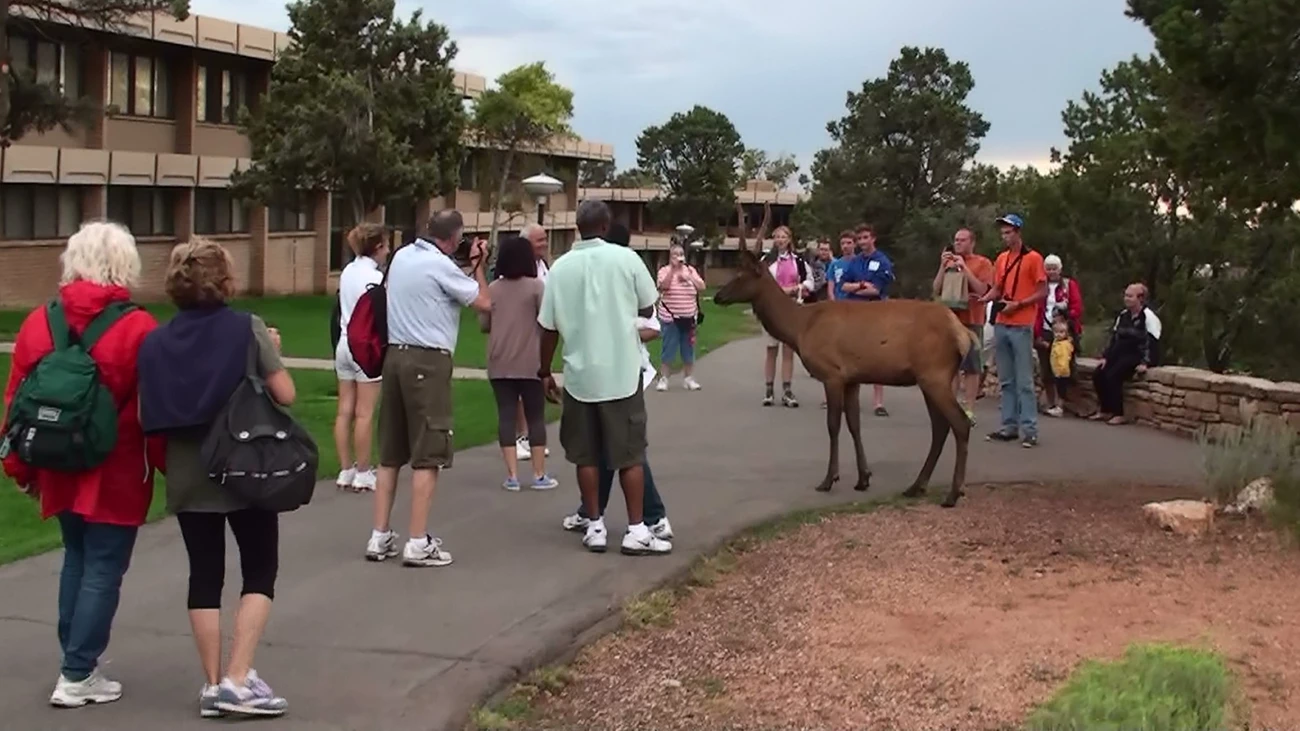
NPS
Habituation occurs when animals are exposed to the same stimuli repeatedly, and eventually stop responding to that stimulus. Wild animals should have a fear of humans, but in Grand Canyon National Park, many wild animals are constantly exposed to people. As a result, they lose their fear of humans and stop acting naturally around the humans in the park. When wild animals no longer see humans as a threat, they allow humans to come very close to them- or the animal will approach a human. While this gives visitors an incredible opportunity to view wildlife, habituation is dangerous for both animals and people.
For example, rock squirrels are a commonly habituated animal in the park. If a person comes close trying to take a picture, the squirrel will scamper away. After this happens many times, the squirrel becomes less afraid of people, and a person can come closer before the squirrel leaves. This process repeats over a period of time, with the squirrel slowly becoming less scared of people. Eventually, the squirrel will completely lose its fear of people, and will allow people to stand beside it without being scared away. If people feed the squirrel, it will start the think of people as a food source, rather than a threat, and the squirrel will begin approaching people.
Habituation is dangerous for animals When animals stop seeing people as a threat, they can be unintentionally harmed by people. In Grand Canyon National Park, elk are a common sight along the roads. Naturally, they should be scared of people, and should run away if a person leaves their car and approaches the elk. Unfortunately, this happens very frequently, and the elk have become habituated to people and cars. Every year, many elk are killed in collisions with cars because they have lost their fear of roads. Habituation is dangerous for people Because they have become habituated to people, elk in the park allow humans to come very close to them. However, they can still be startled, and will feel threatened if a person comes too close. When threatened, elk will kick, bite, or gore people. Naturally, elk would never allow a person to come close enough to be injured. A way to tell if you are to close is to hold up your hand. If the animal if far enough away, you should be able to cover it with your thumb. If it is too large to be hidden behind your thumb, you are too close and need to move away. The Grand Canyon is a shelter and refuge for many incredible species of wild animals. Please remember that these are wild creatures. If they seem tame, it is because they have become habituated to humans, and that is not natural. Help our wildlife live natural lives, and do not approach or feed them.
|
Last updated: February 11, 2016
